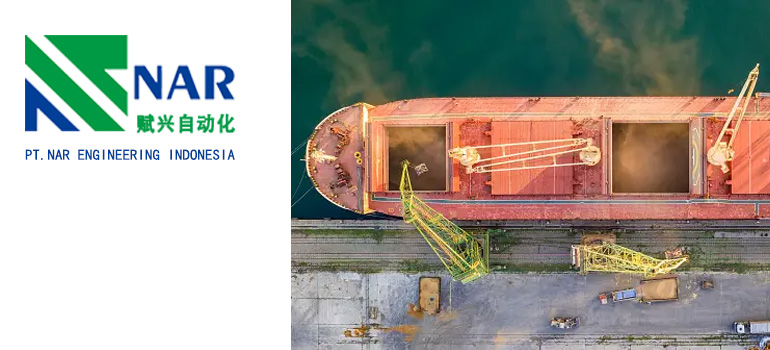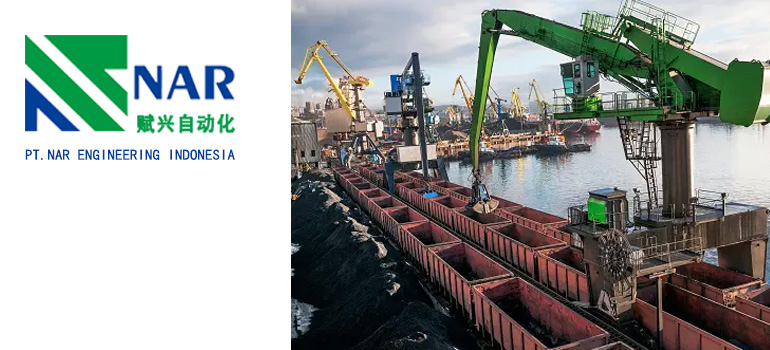Summary:
Mobile Vessel Loading/Unloading Machines: Key Features and Applications
What are Mobile Vessel Loading/Unloading Machines
Key Features of Mobile Vessel Loading/Unloading Machines
Applications of Mobile Vessel Loading/Unloading Machines
Advantages and Benefits of Mobile Vessel Loading/Unloading Machines
Mobile vessel loading/unloading machines represent a critical innovation in the logistics and maritime industries, designed to streamline the process of transferring cargo between vessels and port facilities. These machines are pivotal in enhancing efficiency and operational flexibility across various maritime operations.
What are Mobile Vessel Loading/Unloading Machines?
Mobile vessel loading/unloading machines, also known as mobile loaders or unloaders, are specialized equipment used in ports and terminals to handle diverse types of cargo. They are typically mounted on wheeled chassis or tracks, allowing them to move along docks and between ships and storage areas with ease. These machines are equipped with advanced hydraulic systems and mechanical arms that facilitate the efficient loading and unloading of containers, bulk goods, and other cargo types.
Types of Mobile Vessel Loading/Unloading Machines
There are several types of mobile vessel loading/unloading machines tailored to different operational needs:
Reach Stackers: These versatile machines are capable of lifting and transporting containers within the port area, optimizing container handling operations.
Mobile Harbor Cranes: Offering high lifting capacities, mobile harbor cranes are used for heavy lifting tasks such as loading and unloading bulk cargo and oversized items.
Ship-to-Shore Cranes: While primarily stationary, some modern ship-to-shore cranes have mobile capabilities to improve flexibility and reach across the terminal.
Importance of Mobile Vessel Loading/Unloading Machines
Mobile vessel loading/unloading machines play a crucial role in enhancing port efficiency and logistics operations:
They reduce turnaround times for vessels by expediting the loading and unloading process, thereby minimizing congestion at terminals.
These machines enhance operational flexibility, allowing ports to handle a diverse range of cargo types efficiently.
Their mobility and adaptability improve overall port productivity, contributing to cost savings and operational excellence.
Regulatory and Safety Standards
Operating mobile vessel loading/unloading machines requires adherence to strict regulatory standards and safety protocols:
Compliance with international maritime regulations ensures safe and efficient cargo handling operations.
Safety features such as load monitoring systems, anti-collision sensors, and operator training programs are crucial for preventing accidents and ensuring workplace safety.
In summary, mobile vessel loading/unloading machines represent a technological advancement that plays a pivotal role in modern port operations. Their ability to handle diverse cargo types efficiently, coupled with mobility and adherence to safety standards, makes them indispensable tools for enhancing port efficiency and supporting global trade networks.
Key Features of Mobile Vessel Loading/Unloading Machines

Mobile vessel loading/unloading machines are essential equipment in ports and terminals, designed to handle various types of cargo efficiently and safely. Here are the key features that make these machines indispensable in maritime logistics:
Mobility and Maneuverability Mobile vessel loading/unloading machines are mounted on wheeled chassis or tracks, allowing them to move swiftly along docks and between vessels and storage areas. This mobility is crucial for optimizing space utilization in busy port environments and for quickly responding to changing operational needs.
Design Considerations for Port Accessibility These machines are engineered to navigate diverse port layouts, including tight spaces and varying dock heights. Their design ensures they can access different parts of the port efficiently without compromising safety or operational efficiency.
Loading and Unloading Capabilities These machines are equipped with advanced hydraulic systems and mechanical arms capable of lifting and maneuvering heavy containers and bulk cargo. Their versatility allows them to handle various cargo types, from standard shipping containers to oversized and specialized loads.
Handling Different Types of Cargo From containers to bulk goods like grains and minerals, mobile vessel loading/unloading machines are designed to accommodate diverse cargo specifications. They ensure efficient transfer between vessels and land-based transport, minimizing downtime and optimizing throughput.
Technology and Automation Recent advancements have integrated automation and remote monitoring capabilities into mobile vessel loading/unloading machines. These technologies enhance operational efficiency and safety by allowing operators to control operations from a centralized location and optimizing workflow processes.
Advances in Robotics and AI Integration Some modern machines feature robotic arms and AI-driven systems that automate repetitive tasks, such as container stacking and cargo inspection. This automation not only improves efficiency but also reduces human error and enhances safety standards.
Environmental Considerations Many mobile vessel loading/unloading machines are designed with environmental sustainability in mind. They incorporate energy-efficient technologies and may use alternative fuels to minimize carbon emissions and reduce environmental impact during operations.
Promotion of Resource Conservation Efforts to improve fuel efficiency and reduce emissions contribute to sustainability goals in the maritime industry, aligning with global initiatives to combat climate change and promote responsible resource management.
Safety and Operator Comfort Safety features are paramount in the design of mobile vessel loading/unloading machines. Anti-collision sensors, load monitoring systems, and ergonomic operator cabins are standard features aimed at ensuring the safety of personnel and equipment during operations.
Enhancing Worker Safety Training programs and safety protocols ensure that operators are equipped to handle the complexities of operating these machines safely. Emphasis is placed on maintaining high safety standards to prevent accidents and minimize risks in the workplace.
In conclusion, mobile vessel loading/unloading machines combine mobility, advanced technology, and safety features to optimize cargo handling operations in ports and terminals worldwide. Their ability to handle diverse cargo types efficiently while prioritizing safety and environmental sustainability makes them indispensable tools for modern maritime logistics.
Applications of Mobile Vessel Loading/Unloading Machines
Mobile vessel loading/unloading machines play a crucial role in various industries and operations, providing efficient and versatile solutions for handling different types of cargo. Here are the key applications where these machines are commonly used:
Ports and Maritime Industry Mobile vessel loading/unloading machines are extensively utilized in ports and terminals worldwide:
Role in Container Terminals: They facilitate the rapid transfer of containers between ships and storage yards, optimizing port logistics and reducing vessel turnaround times.
Bulk Cargo Handling Solutions: These machines are adept at handling bulk commodities such as grains, ores, and liquids, ensuring efficient loading/unloading operations at bulk terminals.
Industrial and Commercial Settings Beyond traditional ports, mobile vessel loading/unloading machines find applications in various industrial and commercial environments:
Oil and Gas Terminals: They are instrumental in handling equipment and materials for offshore platforms and oil rigs, streamlining logistical operations in challenging marine environments.
Mining Operations: These machines are used to transport minerals and ores from mining sites to ships or storage facilities, supporting the global supply chain for raw materials.
Environmental and Sustainability Impacts Mobile vessel loading/unloading machines contribute to sustainability efforts across industries:
Efficiency in Resource Management: By optimizing cargo handling processes, these machines help reduce fuel consumption and greenhouse gas emissions, promoting environmental stewardship in maritime operations.
Reduction of Carbon Footprint: Advanced technologies and energy-efficient designs contribute to minimizing the environmental impact of port and terminal operations, aligning with global sustainability goals.
These applications highlight the versatility and importance of mobile vessel loading/unloading machines in facilitating efficient cargo handling, enhancing operational efficiency, and supporting sustainable practices across various sectors.
Advantages and Benefits of Mobile Vessel Loading/Unloading Machines
Mobile vessel loading/unloading machines offer numerous advantages and benefits across various industries, enhancing efficiency, safety, and operational flexibility. Here are the key advantages:
Operational Efficiency
Time and Cost Savings: These machines streamline cargo handling processes, reducing turnaround times for vessels and optimizing port operations.
Safety and Risk Mitigation
Enhanced Worker Safety: Mobile vessel loading/unloading machines are equipped with advanced safety features and ergonomic designs to protect operators and personnel.
Flexibility and Versatility
Adaptability to Various Cargo Types: From standard shipping containers to bulk commodities and specialized loads, mobile machines can handle diverse cargo requirements.
Technological Advancements
Automation and Remote Control: Some machines incorporate automation and remote monitoring capabilities, optimizing workflow efficiency and reducing manual labor.
Environmental Considerations
Sustainability Initiatives: Mobile vessel loading/unloading machines contribute to environmental sustainability by minimizing fuel consumption and emissions.
In summary, mobile vessel loading/unloading machines provide substantial advantages in terms of efficiency, safety, and environmental sustainability. Their ability to enhance operational workflows, ensure safety compliance, and support eco-friendly practices makes them indispensable tools in modern port and terminal operations.

